Are you choosing a gas boiler for arranging an autonomous heating system in a private house or apartment? Agree, I want to choose the best equipment that can provide you and your family with hot water supply and heat in the cold season. But you cannot decide in any way what is better to buy - a double-circuit or single-circuit gas boiler?
We will help you understand this issue - the article discusses the features of double-circuit and single-circuit equipment, their main advantages and disadvantages, the subtleties of using each of them. We also compared two types of boilers, selected thematic photos and video recommendations for choosing the best option, based on the individual needs of a potential buyer.
The content of the article:
-
The device and features of the operation of boilers
- Differences in the design of single and double-circuit units
- Comparative overview of gas boilers
-
Equipment advantages and disadvantages
- Pros and cons of single-circuit units
- Advantages and disadvantages of double-circuit boilers
- Which boiler is better to choose?
- Conclusions and useful video on the topic
The device and features of the operation of boilers
Modern gas boilers, depending on the number of circuits, can be single-circuit and double-circuit. They are similar in appearance and design, but are designed to solve different problems, and in different conditions.
As a result, it can be argued that both types of equipment are equally useful and effective, so there is no better one among them. So it all depends on the right choice. Next, we will figure out in detail how the single-circuit type of a gas boiler still differs from its two-circuit counterpart.
Differences in the design of single and double-circuit units
Products that belong to both types of equipment for the most part consist of the same components.
A detailed device of a modern single-circuit wall-mounted boiler and a diagram of the device of its double-circuit "brother" are shown in the following figures:

Any single-circuit boiler is structurally simple. Which makes them more reliable and affordable. But the listed advantages are leveled by the need to buy a boiler.
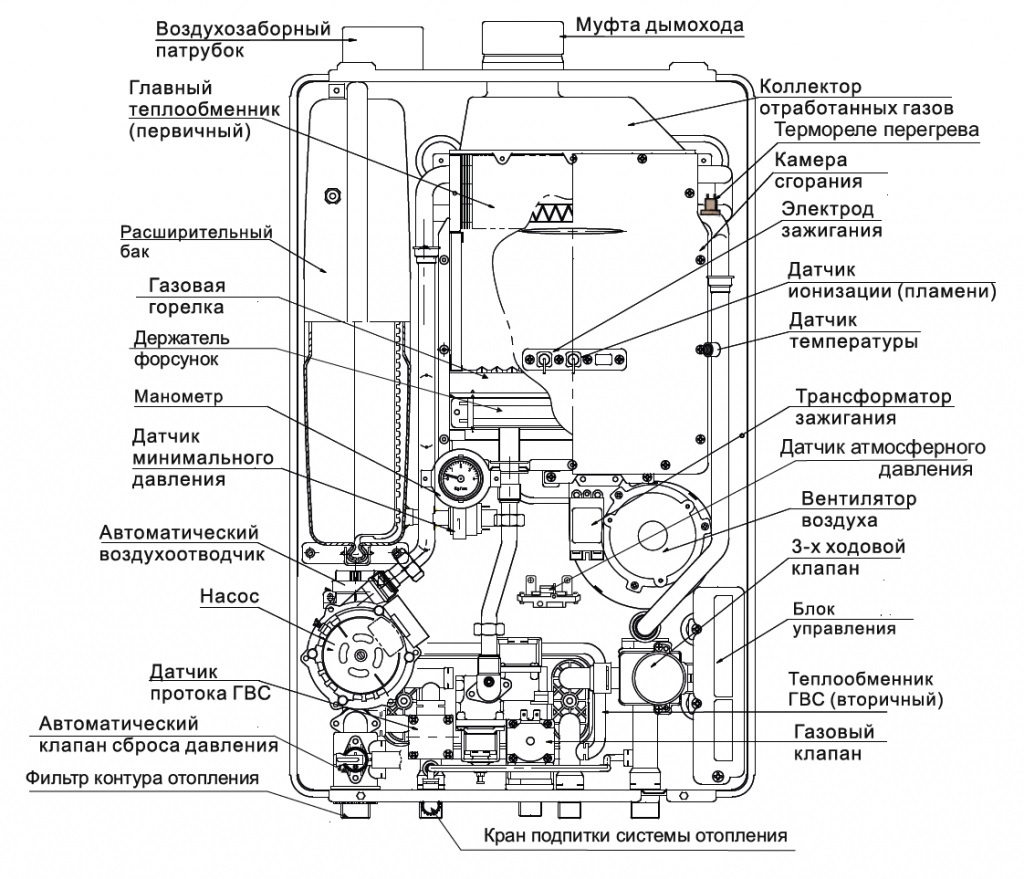
The presence of a complex heat exchanger and a three-way valve in a two-circuit unit makes it fundamentally different from any single-circuit analogue
The main units of the two types of boilers are similar - both the name and the purpose.
So, similar elements of single and double-circuit equipment:
- cold water supply pipelines;
- gas-burner;
- membrane tank;
- chimney.
Even a structural element designed for heating water is called the same for them - a heat exchanger.
But, if you look at it, it turns out: the name is the only thing that makes the specified unit similar in boilers of different types - heat exchanger a single-circuit unit is a pipe that serves to efficiently transfer heat released during gas combustion, water.
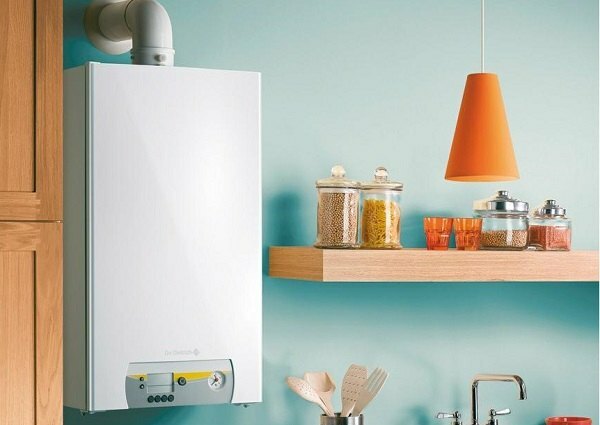
An important difference between double-circuit boilers is that they are equipped with everything necessary for space heating and hot water supply. Therefore, there will be no additional costs for the purchase of equipment, and they also save space.
And in the case of its dual-circuit counterpart, everything is not so simple, since its heat exchanger is structurally more complicated. Moreover, such products are divided into separate subspecies and are bithermic and doubled.
In the first case, the structure is a pipe placed in a similar product with a larger diameter. This feature allows you to create 2 circuits, one of which is designed to transfer heat to the liquid used for heating, and the second for the hot water supply system.
The double heat exchanger consists of:
- pipesthat provide heating of water for heating;
- platestransferring heat to liquid for water supply.
That is, the design complexity of the heat exchangers of double-circuit boilers differ solely because of the need to solve 2 problems.
But still, the most significant difference between single-circuit and double-circuit products is the presence in the design of the latter three-way valve. The task of which is to change the direction of hot water.
So in the standard position, the valve is in a position in which the coolant is supplied only to the radiators. Everything changes when the hot water tap opens. Since the three-way valve, having received the corresponding signal, moves to a different position. Namely, in providing hot water supply.
In this case, the supply of the coolant to the radiators is stopped, and in full - the premises will not be heated throughout the entire period of using hot water for domestic purposes.
That is, the design of a double-circuit boiler allows it to supply hot water only in one of two modes. But still, such a feature should not be considered a weak point of the equipment.
Comparative overview of gas boilers
Both of the presented types of equipment are used to heat the coolant for the purpose of heating rooms and buildings. And on this, the functionality of single-circuit boilers is limited.
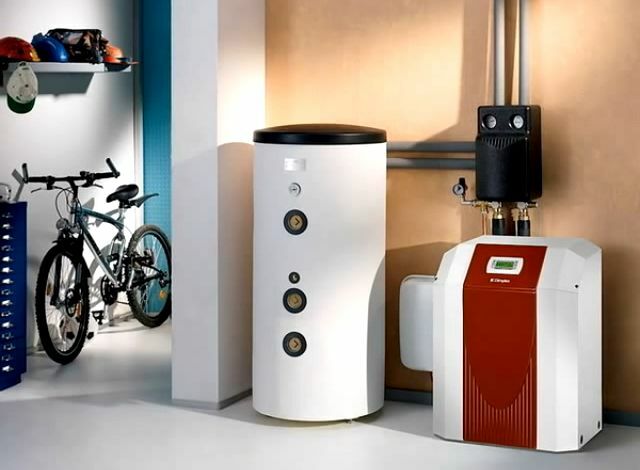
A single-circuit gas boiler serves exclusively for heating the coolant entering the radiators of the heating system. But if you add an indirect heating boiler to it, then it, like its two-circuit counterpart, will be able to provide hot water supply
Their double-circuit counterparts are additionally used to provide hot water supply in order to solve any domestic problems. That is, they make it possible to take a shower, perform any other hygiene procedures, wash dishes, etc.
Next, we will conduct a comparative review of single and double-circuit boilers according to a number of criteria.
| Comparison criteria | Single-circuit boiler | Double-circuit boiler |
| type of instalation | floor; wall | floor; wall |
| Additional investment |
absent if there is no need for Hot water supply; if DHW is required, then you need to purchase a cumulative boiler |
absent if there are no more than 2 tapping points and they are located next to the boiler |
| Profitability | turns on when the temperature of the water in the boiler is cooled below the permissible level |
the heating circuit turns on when the coolant cools below the permissible level; the DHW circuit is switched on every time after the start of water withdrawal |
| Compactness | when used in conjunction with by the boiler, the occupied area actually doubles |
more compact than single-circuit; wall models are suitable for use in confined spaces |
| The convenience of use | when used in conjunction with a boiler hot water will be the same temperature at all sampling points; the coolant is supplied to the heating system evenly |
when the boiler power is insufficient and there are many points of water intake, differences are possible temperature of water and heat carrier, and sharp; no water is supplied to the heating system when the taps are open |
As you can see, in order to organize hot water supply in the presence of a single-circuit boiler, you will have to buy additional equipment. For example, indirect heating boiler. And these are additional expenses.
Moreover, after purchasing a boiler, it must be correctly installed and connected. And how to do this correctly and what to take into account when operating such devices, we told in detail in this article.
Equipment advantages and disadvantages
Both types of gas boilers are easy to operate, efficient and durable. They also have an attractive appearance.
The design of each type of gas boiler is designed to meet the needs of various categories of users, which clearly demonstrate their advantages and disadvantages. And they also make it possible to understand the differences between a single-circuit gas boiler and its double-circuit analogue, helping a potential buyer to make the right choice.
Pros and cons of single-circuit units
Such products are able to provide stable heating of premises of any area, number of storeys, distance from the heat exchanger.
And, in addition, single-circuit boilers:
- more reliablethan their double-circuit counterparts, the design of which is more complex, which leads to a slightly larger number of breakdowns;
- easier to maintain, which is also due to design features;
- cheaper.
An important advantage is that single-circuit units can become the basis for connecting other equipment. That will expand their functionality and improve the comfort of living.
It should always be remembered that if it is necessary to provide hot water supply in the premises, together with a single-circuit boiler, you will have to buy a storage boiler. And this will lead to considerable additional costs. And the set of the listed equipment will take up a lot of space, which can be critical for small apartments.

Connecting storage boilers will provide the premises with hot water supply. Moreover, water will be supplied hot at any time, which is not always possible to achieve from double-circuit analogs.
This type of equipment, in the absence of the need for hot water supply, has no pronounced shortcomings. But otherwise, the lack of universality immediately affects. Which leads to the need to purchase an additional electric heater.
As a result, its joint operation with a single-circuit boiler leads to:
- high costs for purchase, installation, service;
- limited volume of water for domestic needs - for joint use with single-circuit units, boilers are most often bought, therefore, the question may arise about the rational consumption of water, the volume of which depends on the capacity drive;
- more stress on the wiring.
The last drawback is relevant in cases where the house or apartment has old wiring or powerful electrical equipment is used in parallel. So, you may need to upgrade the electrical wiring and cable selection larger section.
You should also be aware that a set of a single-circuit boiler and a boiler takes up significantly more spacethan one double-circuit boiler. And with limited space, this can be a significant disadvantage.
Advantages and disadvantages of double-circuit boilers
Units that belong to the specified type with some restrictions, but are still capable of providing hot water to two systems at once (heating, hot water supply). They also take up less space than their boiler counterparts. As a result, double-circuit boilers are more convenient to use.
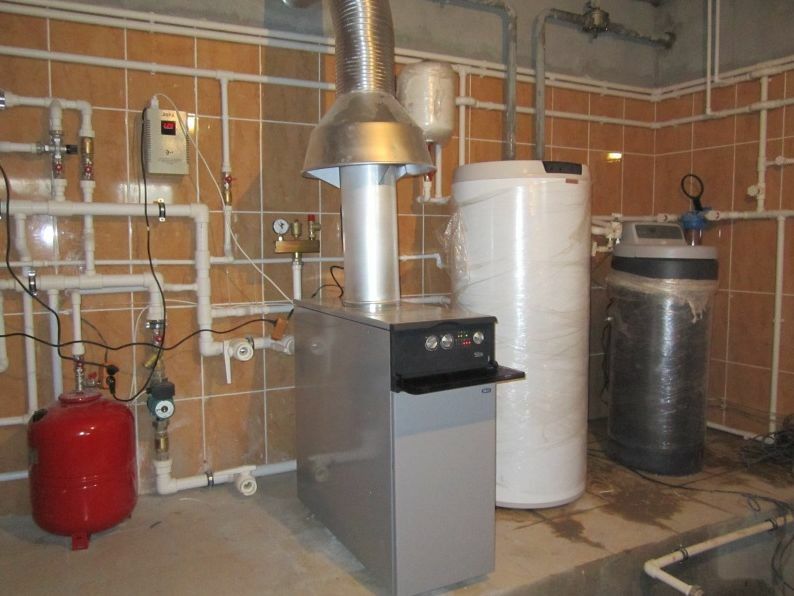
Both types of gas boilers are easy to operate, efficient and durable. They also have an attractive appearance.
In addition, the competitive struggle of manufacturers has led to the fact that the difference in the cost of both types of units is gradually leveled.
Therefore, today you can find a double-circuit boiler whose price exceeds that of a single-circuit product slightly. That in some cases can also be considered an advantage.
If we talk about the disadvantages of double-circuit boilers, then the most important is the impossibility of instantly providing hot water of the same temperature to all points of water consumption in a house or apartment.
So, in their heat exchangers, the amount of water that is needed right now is heated. That is, no stock is created. As a result, the water temperature may differ from expected or change during use. This happens when the pressure, head changes, for example, after opening / closing the second valve.
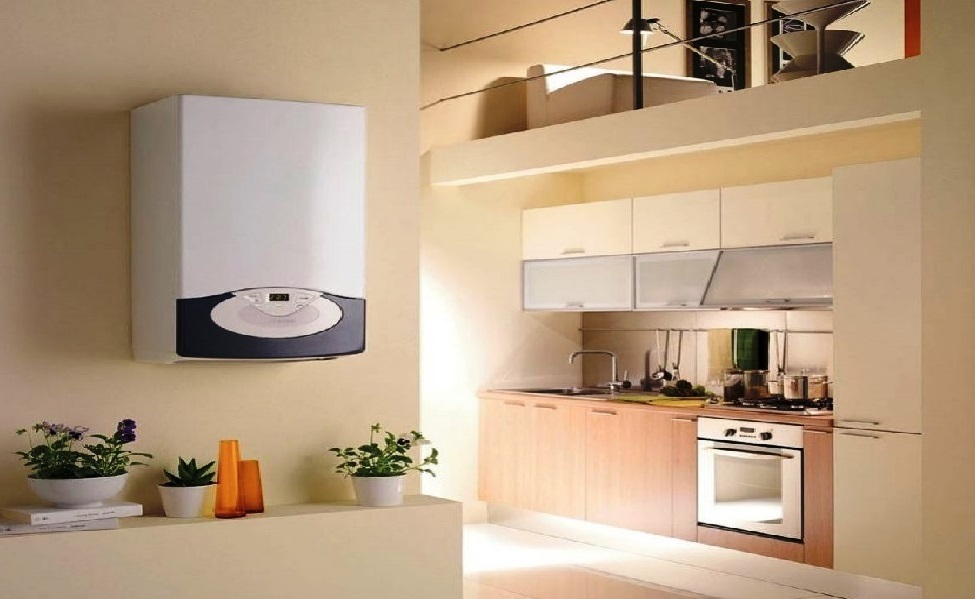
When using a double-circuit boiler, the water temperature often differs at two different points of the water intake - hot water can be delivered to the desired point with a delay, and significant. Which is inconvenient and leads to additional costs
As for the installation, then installation of double-circuit boilers Is a more complicated procedure, especially at the design stage. Since you will have to follow the numerous recommendations of the manufacturer
Which boiler is better to choose?
When choosing the best boiler, it should be borne in mind that each type of equipment is designed for specific conditions. Subject to which they will show maximum efficiency, will allow you to achieve the expected result and level out the shortcomings.
Therefore, it is so important to determine your requirements and take into account living conditions. So, if the equipment is selected for the apartment and there is no extra space for installation, then the ideal option would be double-circuit wall-mounted boiler. And although it is inferior in power to floor-standing models, it is quite capable of meeting the needs of residents.
For a summer cottage or a private house, where there is a separate room for the arrangement of the boiler room, a great solution would be to install a floor-standing single-circuit gas boiler in conjunction with a boiler the required volume. That will meet the needs of the family for hot water and heat.
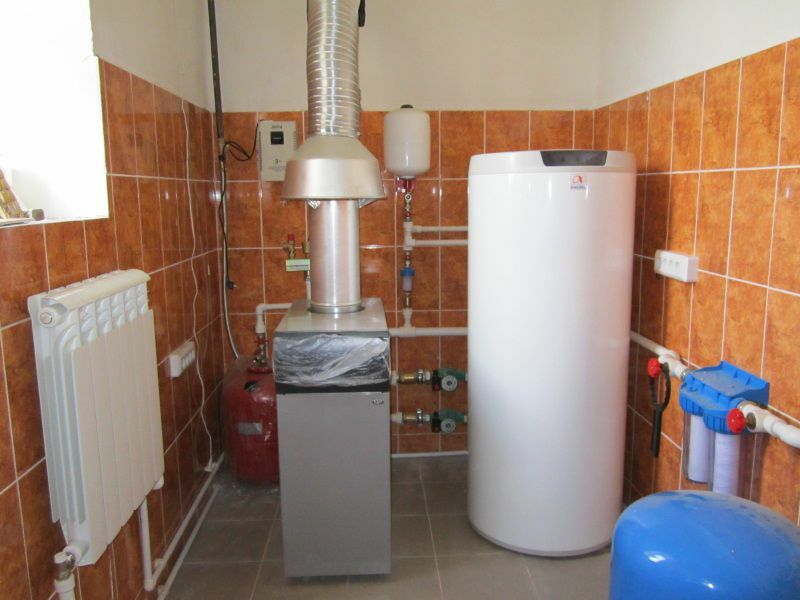
When installing any model of a floor-standing single-circuit boiler with a boiler, an order of magnitude more space will be required than for double-circuit counterparts. And the load on the equipment in this case will be higher, so it is important to choose the right boiler power
If you are choosing a heating unit for a country two-story house or cottage, then in this situation it is best to stay on a powerful double-circuit floor boiler with built-in large-volume heater.
Floor standing gas boilers with one and two circuits differ more power from their wall "brothers". They also most often non-volatile. This is quite convenient, especially if there are power outages in the region.
We have provided more recommendations and important criteria for the selection of gas boilers in next article.
Conclusions and useful video on the topic
This video will help you understand the features of various types of gas boilers:
The video is intended to deepen your knowledge of the topic and help you make the right choice:
When making a choice between a double-circuit boiler and its single-circuit analogue, you should not wonder what is better. Since all the specified equipment is modern, productive and durable, but, as mentioned above, is designed to solve different problems. Therefore, it is so important to consider personal needs and living conditions so that the equipment does not disappoint you.
How many circuits does your gas boiler have? Share your impressions of using your heating equipment - tell us if all your needs are satisfied by the selected boiler or for some reason you consider your choice erroneous? Add a photo of your gas boiler, indicate its pros and cons found during operation.


